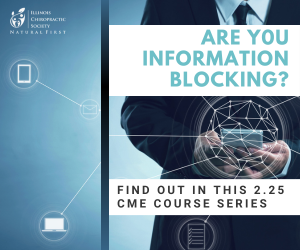
How To Use the ICS AI Effectively
Never feel stuck again. Paxson gives you 24/7 answers to the questions that slow you down, along with ready-to-use policies, templates, scripts, and step-by-step guides, so you can run your practice with clarity and confidence.
Referenced Link:
Paxson
ADA Requirements: Effective Communication for Patients with Vision, Hearing, or Speech Disabilities
LEP Translation Requirement Solution
Transcript:
Several months ago, we launched a closed system internal AI for our members. We wanted you to have an artificial intelligence to be able to use as an extension of your team, as an extension of the ICS, and make it available all of the time, 24/7, if you will. And so the way that we did this is we created this environment that is trained our artificial intelligence, or Paxson, as we have named the AI. Paxson is trained specifically on ICS, content, both public and members-only, information, all of our forms, and templates. Paxson is trained on other things that we provided, that are all primary source information. So for example, when we start talking about compliance, it’s trained on very specific governmental information, maybe government websites, or whatever the case is, all to help you make sure that you’re getting primary source information, and not just this world of this universe of information, whether accurate or inaccurate, we want you to feel and have more confidence when you’re using AI. So we’ve created this specifically for you.
So what I want to do today is I want to share with you a couple of key things. One is, there is a public version, and then there’s a members-only version. We want to encourage all of our members to make sure you use the members-only version. It’s more robust. It’s providing more information. And will actually even create some resources for you to use in your practice, guides, it’ll provide procedures and policy templates for you to use, it’ll even give you step-by-step instructions if you want to have that, it’ll help sometimes create some template letters and other things for you. You can actually use it to help develop more for your practice.
So let’s go through this really quick, and I’m going to show you actually based on a live question that we recently received from one of our members. So I’m going to jump over here and show you exactly how this thing works. So this is on our front page, and this is the public version of Paxson. And so if you key in a question, and this question was really specific to a patient who is hearing impaired, and the doctor really wanted to help the patient, but effectively, what happened was they realized that this could get expensive. One thing I wanted you to know, I don’t want you to use it like a search engine. Don’t just key in a couple of words like hearing impaired or American Sign Language, or some things like those. Can you do that? Sure, you can, but the information that comes back is going to be limited, and because there’s no context. We’re encouraging you to key more in, add more information in, and give the AI more context. So in this case, I had a patient come into one of our offices who is hearing impaired. She requested a sign language interpreter. Am I required to provide these services? Can I charge the patient for the services? And if not, how can I afford to provide the services? If the cost is greater than reimbursement? I want to help the patient, but the cost is concerning.
So this is the question. It is slightly paraphrased, but you get the gist. This was the idea. So here’s the public version. Now you’ll notice, actually, after a while, and I just hit that limit, that actually there’s a limit for the public version. This answer, had you seen it before this, would have been one or two sentences. But what I want to show you is actually the same question on the member side. So you can click right here to get the member side of things, or you can actually just go to ilchiro.org/paxon PAXSON, ilchiro.org/paxson, and it will take you right to the members-only version. You will have to log in if you haven’t logged in yet in this browser or recently, because it will you know the system does log you out after time. Just make sure you use your login credentials for the ICS. Once you’re in, then at that stage, this is where we want you to begin to ask these robust questions. So I’m going to key back in that same exact question we’re going to go ahead and ask. Now it’s not just giving you a willy-nilly answer. It’s not just grabbing some keywords and throwing up articles for you to be able to access. Instead, what it’s doing is it’s looking across all of our wealth of information that we have trained Paxson specifically for. At that stage, then it’s going to formulate an answer and begin to tell you exactly what it is. So don’t get impatient. Go ahead and be patient. Imagine if you were combing through 1700 to 1800 different articles and about two to 300 other sources, our entire YouTube channel, all of our social media, the whole nine yards. It’s trained on all of those areas. So at the end of the day, when Paxson is done doing the analysis, it’s going to begin to provide more information. You’ll see, here’s what you’re required, by the way, here’s a potential solution for you to use in your practice.
Now this is where it gets really important. We want you to pay careful attention to the very end, and you’ll notice that Paxson asks follow-up questions. In this case, would you like a sample policy or a step-by-step guide for implementing interpreter services into your practice, or a template for documenting interpreter use for compliance purposes? In this case, I think, really, what the doctor needs is this ongoing policy. So this is where you would just ask it. Please put together a policy for our offices to implement, and also provide a step-by-step guide for our staff.
You’ll notice I had several misspellings in here. I missed, I didn’t use good punctuation or capitalization. Don’t worry about it. The AI is trained to be able to weed through that, so don’t worry about it. Just go ahead and hit enter, and it’s okay. It’ll figure it out, and if not, you can correct it on the next round. Don’t use it like a search engine. Again, what we’re trying to do is see more. In fact, you’ll notice above, in the previous answer, that there are references. You can actually click on this and see the different areas that Paxson utilized primarily to develop the answers. Again, it’s not just the search engine. It’s doing more, right? So in this particular case, you’ll see this is, you know, this is a policy for effective communication and auxiliary aids for patients with communication disabilities. And boom, it lays it out there. Here’s the purpose of this particular policy, the scope. There’s a policy statement. You’ll notice that even inserts where you can add your practice, name, procedures, what are the costs, and why that matters, and all of these things. And then here’s your step-by-step guides.
Again, if you want more information, not a problem, you can see what references were utilized to develop both the policy and the step-by-step guide for staff and communication. You can even go one step further, and you can say, Please create a script for my team to use when communicating. Give me a verbal script and one for email, for those that may not be able to read right, or sorry, who may not be able to hear, sorry, deaf, and I apologize for that. I put the wrong thing in there, but you’ll get an idea, and hopefully, Paxson will be able to figure out through my misspeak or my mistype here, and we’ll find out more information.
So she’s thinking through this again. What we’re encouraging you to do is be more robust in your questions. Give Paxson more context for what you need. And very quickly, you can see, here are two scripts that you can use. Here’s a verbal script for the in-person or over the phone. And you can get a quick idea of how this could work. And of course, you can tailor this specifically for your practice, but that gives you an idea. And here’s an email in plain language that potentially could be utilized. All of this information is available, and Paxson is available for your use. And we encourage you to jump out and use her. Don’t hesitate to do that. In fact, I would encourage you to just jump out today, ilchiro.org/paxson, and see what she can do as an extension of your team, as an extension of the ICS.
We want to help you. We want you to have the most robust ability to be able to serve your patients and spend the time serving your patients instead of handling all of the compliance things, developing policies, and trying to figure out many of these things. Of course, we’re always here. We want you to call. We love our conversations with our members, but we also want to make sure that you have what you need at your fingertips in a moment, and hopefully, this will help you out. We’ll catch you next week.

















